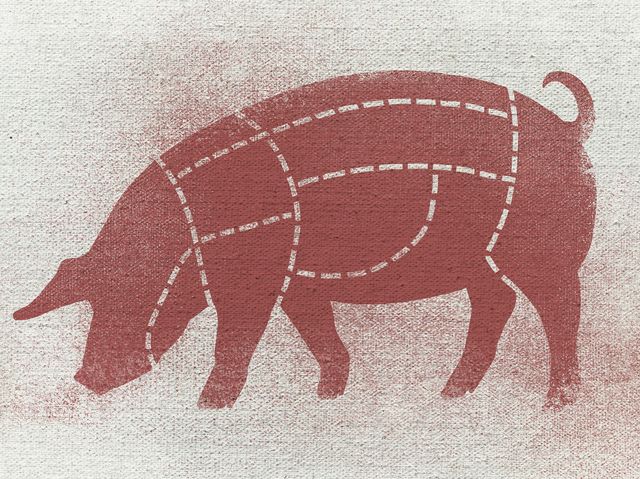Below is a list of organisations who can receive and use, or otherwise help with, donations of surplus food. Some of these organisations are active only in London, while others operate in various regions throughout the UK. For more information please visit the websites of the relevant organisation.
National
FareShare accepts food from businesses and uses any stock that is food safe, including those requiring chillers, freezers, and ambient storage. They products such as those with packaging errors, short-dated food, seasonal stock, manufacturing errors, damages, etc., including meat, fish, eggs and dairy products; fruit and vegetables; chilled food, such as ready meals or drinks; frozen food, or chilled food that has been blast frozen; ambient goods, such as pasta, tins and cereals; and bakery. They do not accept cooked food from events. They have hubs all over the country and the FareShare Go Scheme connects supermarkets with local charity or community groups.
FoodCycle runs community events to cook and serve donated food to those in need across the UK. They work with major food retailers including Marks and Spencer, Morrisons, Sainsbury’s, Tesco, Waitrose, and with local independent retailers and markets.
Neighbourly puts local stores that have surplus in direct contact with the charities and projects that can get the food to people who need it. Works with M&S, Lidl, and others.
Real Junk Food Project is a collaborative effort between catering professionals and activists to bring about a radical change in the food system. RJFP intercept food that is past its expiration date, prepare the food and serve it in their cafés on a pay as you feel basis. There may be an RJFP open near you, or coming soon or you could open your own. Contact them via their Facebook page to find out.
Olio is an app that works with shops and cafés to reduce food waste. Their Food Waste Hero (FWH) programme involves OLIO matching volunteers with shops or cafes. They will collect any unsold surplus food at the end of the day and share within the local community. In addition, Olio’s app enables cafes or shops to upload information about surplus food directly. Local residents will be notified when the shop or cafe shares its unsold food, and they can message the shop or cafe to confirm collection. Finally, shops or cafes can host a drop box, a plastic OLIO box placed in the shop or café so that neighbours can exchange food without having to arrange for a doorstep collection.
Plan Zheroes accepts big and small food donations from restaurants, catering companies, supermarkets, food stores, stalls, etc. either regularly or occasionally. Businesses are matched with local charities who transport the food.
Too Good to Go is a food sharing app that collaborates with restaurants and food businesses around the country to redistribute their excess at the end of the day. Surplus produce is sold at a reduced price for the app users, who pick up their meal at a specific time (usually at the end of business hours).
Community Fridges exist across the country. They are run by different groups and organisations but all collaborate with local businesses and community groups to provide donated surplus food for local people.
London
City Harvest collects nutritious surplus food from all segments of the food industry including restaurants, grocers, manufacturers, wholesalers, hotels and caterers in London and donates the produce to redistribution char

ities.
Community Food Enterprise is a social enterprise. They collect surplus food and redistribute it to community groups in East London. CFE greatly needs surplus tinned fruit, cereal, coffee, cooking oils – fruit and vegetable donations would also be appreciated. They are always looking for volunteers.
DayOld is a food surplus social enterprise tackling food waste and food poverty in London. DayOld sells surplus baked goods (from brownies to cinnamon rolls to artisan loaves of bread) through treat boxes, office pop-ups, and event catering. Their baked goods are surplus, collected from artisan bakeries the previous day, preventing them from going to waste. Their profits become cash donations to charities addressing child hunger.
The Felix Project Works with supermarkets, wholesalers, and retailers to distribute donated food. As of April 2017 the organization will provide fruit, vegetables, bakery and dairy products, as well as dried goods. It does not
provide meat or fish, or accept or deliver supplies beyond the use by date.
Save the date café are an East London group fighting to prevent food waste. They turn surplus food into delicious meals and serve them on a pay as you feel basis.
The People’s Kitchen are community feasts held around London for people to share skills and food. The feasts rely on surplus donations from various retailers.
London Street Food Bank A co-operative of volunteers who collect and distribute non-perishable foods for low I
ncome or non-income families. Also includes a group of volunteers who collect daily leftover food, such as sandwiches, rolls, salads etc. from retail food outlets and distributes them to the homeless on the streets of London. (See also listing below)
North London Action for the Homeless accepts donations of tinned vegetarian food and accepts large donations of quality, fresh ingredients. In particular, they need regular donations of tea, sugar, squash, oil, long life milk, vegetable stock, tinned tomatoes, pasta and lentils.
South East
UK Harvest is a perishable food rescue operation that collects quality excess food from commercial outlets and delivers it to charities in West Sussex. They collect from all kinds of businesses; from fruit & veg markets, to corporate companies to film and TV shoots. If your business has excess food, you can sign up to donate here. They do not provide meat or fish, or accept or deliver supplies beyond the use by date
South West
Exeter Food Action rescues excess food from shops and suppliers and redistributes it to local charity organisations. They are always looking for new donation sources.
North West
The Bread and Butter Thing offer a deeply discounted food service to its community in Greater Manchester. They accept donations from local and national suppliers as well as from community members and take one off as well as regular donations.



 Heat 3 tbsp of vegetable oil in a shallow frying pan, and add in the pickled onion, sliced in half. Toss over medium heat until the onions start to caramelise – allow about 10 minutes. Add a pinch of cayenne and some thyme. Then, add in your leftover roast potatoes (you want about 500g in total); you can also throw in any leftover parsnips and carrots. Stir well to keep from sticking. Finely slice your leftover greens (brussels sprouts are perfect) and add to the pan. Season with salt and pepper and then serve. The crispy bits are the best!
Heat 3 tbsp of vegetable oil in a shallow frying pan, and add in the pickled onion, sliced in half. Toss over medium heat until the onions start to caramelise – allow about 10 minutes. Add a pinch of cayenne and some thyme. Then, add in your leftover roast potatoes (you want about 500g in total); you can also throw in any leftover parsnips and carrots. Stir well to keep from sticking. Finely slice your leftover greens (brussels sprouts are perfect) and add to the pan. Season with salt and pepper and then serve. The crispy bits are the best! into the dish. If you have leftover marzipan to use up, glacé fruits or chocolate chop up and toss with the breads. In another bowl, whisk together 2 eggs, 225 ml of milk and 140 ml of cream, add a tbsp of caster sugar and a tsp of vanilla essence. Pour over the breads. Set the baking dish into a roasting tray and pour over hot water to halfway up the sides of the baking dish (not in with the bread). Carefully place in the oven at 140C fan or Gas Mark 3 and bake for about 35 minutes until lightly browned. Dust with icing sugar and serve with a dollop of ice cream.
into the dish. If you have leftover marzipan to use up, glacé fruits or chocolate chop up and toss with the breads. In another bowl, whisk together 2 eggs, 225 ml of milk and 140 ml of cream, add a tbsp of caster sugar and a tsp of vanilla essence. Pour over the breads. Set the baking dish into a roasting tray and pour over hot water to halfway up the sides of the baking dish (not in with the bread). Carefully place in the oven at 140C fan or Gas Mark 3 and bake for about 35 minutes until lightly browned. Dust with icing sugar and serve with a dollop of ice cream.


 Celeriac, Apple & Wild Garlic
Celeriac, Apple & Wild Garlic




 “Even though I was someone who identified as being passionate about food waste, and concerned about food sustainability, I had never been to a commercial fruit farm before attending a glean with Feedback. I realised that I had been engaging with the issue of food waste from a single perspective (as a consumer) and that there were so many other ways to get involved – including, and importantly, at farm level. Sometimes the scale of the issue feels overwhelming. But unlike many other global issues, food sustainability is something we can all take direct action on. We all eat. We all have the capacity to make significant changes and tangible impact on reducing waste. What Feedback has taught me is that these actions are not the only way to get involved. It is also vital that we expand our perspectives and move away from solely consumer impacts to learn about and change our food system. We are not just food consumers, but food citizens.”
“Even though I was someone who identified as being passionate about food waste, and concerned about food sustainability, I had never been to a commercial fruit farm before attending a glean with Feedback. I realised that I had been engaging with the issue of food waste from a single perspective (as a consumer) and that there were so many other ways to get involved – including, and importantly, at farm level. Sometimes the scale of the issue feels overwhelming. But unlike many other global issues, food sustainability is something we can all take direct action on. We all eat. We all have the capacity to make significant changes and tangible impact on reducing waste. What Feedback has taught me is that these actions are not the only way to get involved. It is also vital that we expand our perspectives and move away from solely consumer impacts to learn about and change our food system. We are not just food consumers, but food citizens.”




 This would ensure that pigfeed did not compete with food crops that could be eaten directly by humans, and most importantly, that it doesn’t raise pressure on deforestation through demand for crops like soya. What does 100g of pork look like? It would look like one of these four steaks so on average, each person could have one of these once every 7-10 days (if they wanted to). Tasty! Having far less, more ecologically produced meat, could also raise animal welfare (particularly as so many pig farmers’ cost pressures come from the high cost of conventional feed).
This would ensure that pigfeed did not compete with food crops that could be eaten directly by humans, and most importantly, that it doesn’t raise pressure on deforestation through demand for crops like soya. What does 100g of pork look like? It would look like one of these four steaks so on average, each person could have one of these once every 7-10 days (if they wanted to). Tasty! Having far less, more ecologically produced meat, could also raise animal welfare (particularly as so many pig farmers’ cost pressures come from the high cost of conventional feed).













